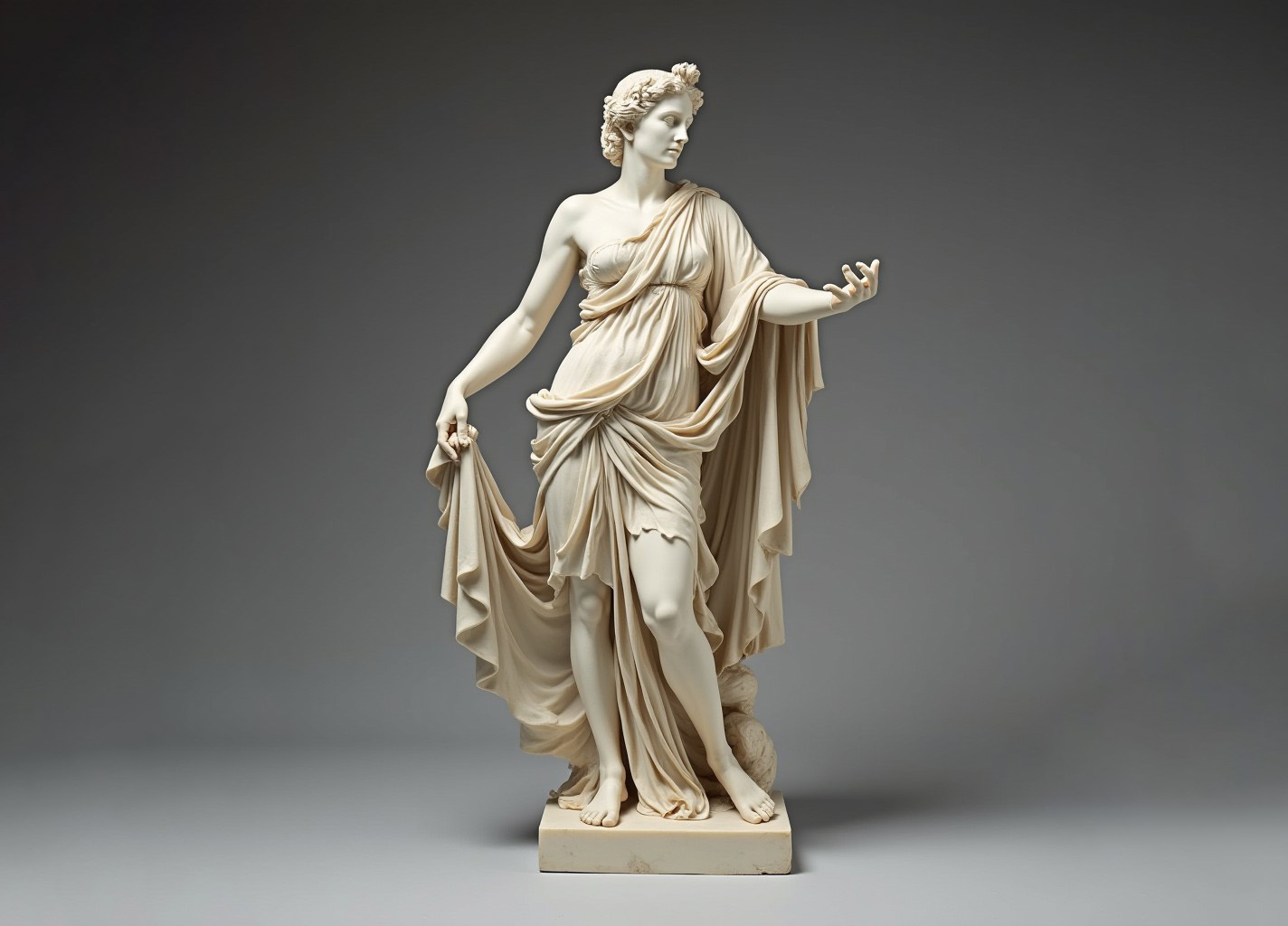
What Does the Athena Statue Represent
In the heart of ancient Athens, gleaming beneath the Mediterranean sun, stood one of the most awe-inspiring works of human hands: the statue of Athena. More than just a sculpture, this figure was a statement of identity, a political emblem, a spiritual guardian, and a work of art that would inspire countless imitations for millennia. Whether rendered in marble, bronze, or gold and ivory, statues of Athena have transcended their original cultural setting to become universal symbols of wisdom, courage, and civilization itself.
This story will take you through the origins, meaning, and fate of the most famous Athena statues; explore what they represent in art; and finally, bring the discussion into the present by asking: could an Athena statue be the perfect centerpiece for your garden?
Who Was Athena?
Athena, in Greek mythology, was the goddess of wisdom, strategic warfare, crafts, and the protector of cities, especially Athens, which bore her name. She was born fully armed from the head of Zeus, a miraculous origin that linked her directly to divine intellect and martial prowess.
Unlike the impulsive war god Ares, Athena represented the disciplined, tactical side of battle. She was a patron of heroes, from Odysseus to Perseus, and a guiding light for statesmen and artisans alike. In art, she is almost always shown armored, wearing a crested helmet, holding a spear, and bearing the Aegis (a protective cloak or shield, often fringed with snakes and featuring the head of the Gorgon Medusa).
Given her status as the city’s divine guardian, it’s no wonder the Athenians filled their city with statues of her, each infused with layers of meaning.
What Does the Athena Statue Represent?
An Athena statue is never just a beautiful object, it’s a statement.
In ancient times, the presence of her likeness served several functions:
Protector of the City – The statue was thought to carry a divine presence, watching over citizens and safeguarding the polis from enemies, both human and supernatural.
Embodiment of Wisdom and Strategy – Athena was not only a warrior but a thinker. Her statue in a public place reminded people that reason and foresight are as essential as bravery.
Symbol of Civic Pride – For Athens, especially during its Golden Age, monumental statues of Athena were as much political propaganda as they were religious devotion. They proclaimed, “This is the city of Athena, strong, cultured, and favored by the gods.”
Artistic Showcase – Statues of Athena allowed artists and craftsmen to demonstrate their skill, blending realism with idealized beauty.
Athena in Art: Symbolism and Attributes
In art, every detail of an Athena statue is purposeful:
Helmet – Often pushed back on her head, suggesting readiness for battle but also a calm confidence.
Spear – Represents martial capability and authority.
Shield or Aegis – Defensive power, often with the Gorgon’s head to ward off evil.
Nike (Winged Victory) – In some statues, Athena holds a small statue of the goddess Nike, symbolizing victory itself.
Owl – Her sacred animal, representing wisdom and watchfulness.
Serpents – Protective forces, sometimes linked to the earth and ancient fertility powers.
Artists would adjust these attributes depending on the statue’s purpose. A temple statue might emphasize divine majesty; a public square version might stress protective strength.
The Original Statue of Athena: The Athena Parthenos
The most famous statue of Athena was the Athena Parthenos, created by the master sculptor Phidias around 447 BCE. This towering work, about 12 meters (39 feet) high, stood inside the Parthenon on the Acropolis.
It was made of chryselephantine, a combination of gold (for her robes and armor) and ivory (for her skin). The sheer cost and craftsmanship made it both a religious treasure and a political declaration of Athens’ wealth and power.
Descriptions from ancient authors and small-scale Roman copies tell us that Athena stood upright, wearing a helmet and holding a spear in one hand and a statue of Nike in the other. At her feet coiled a serpent, possibly Erichthonius, a mythical king of Athens.
The Fate of the Athena Parthenos
Sadly, the original Athena Parthenos no longer exists. Over centuries, the gold was likely stripped for use in times of crisis, and the remaining materials decayed or were destroyed.
By the Byzantine era, the statue had probably been removed from the Parthenon, possibly taken to Constantinople. There, it may have been destroyed during the Fourth Crusade in 1204. What survives are detailed descriptions, some sculpted copies, and the cultural memory of her grandeur.
Other Famous Athena Statues
While the Parthenos was the most famous, there were other monumental statues:
Athena Promachos – Another colossal work by Phidias, this bronze statue stood outside the Parthenon. Sailors approaching Athens could reportedly see her shining spear from afar.
Varvakeion Athena – A small Roman-era marble copy of the Parthenos, discovered in Athens, that gives us a good sense of the original’s composition.
Athena Giustiniani – A Roman copy in the Vatican Museums, representing a more serene and contemplative Athena.
Why Was the Athena Statue Important?
The Athena statue was more than a religious icon. It served as:
A Unifying Symbol – Citizens could rally around a shared identity.
A Cultural Anchor – It linked Athens to its mythical past and divine patron.
A Masterpiece of Human Achievement – It represented the heights of Greek art, engineering, and aesthetics.
A Political Statement – Its scale and opulence signaled to allies and rivals that Athens was a power to be reckoned with.
The Meaning of Athena Statues Today
In modern times, Athena statues have taken on additional meanings:
Education and Knowledge – Athena is a favorite emblem for universities and libraries.
Justice and Law – Her balanced wisdom makes her a symbol for fair governance.
Feminine Strength – She embodies a powerful, intelligent female archetype.
Athena Statue as Garden Décor
Now we leap from the marble temples of antiquity to your backyard.
Is an Athena statue good for a garden? Absolutely, if chosen and placed thoughtfully.
Benefits:
Symbolic Presence – A garden Athena brings an aura of wisdom, serenity, and protection to your outdoor space.
Visual Focal Point – Her upright stance and elegant form draw the eye and create a natural center of attention.
Conversation Starter – Guests will inevitably ask about her, giving you an excuse to share her rich history.
Material Considerations for Outdoor Use:
Stone or Marble – Durable but heavy; requires a stable foundation.
Bronze or Resin with Bronze Finish – Weather-resistant and rich in color.
Concrete – Affordable and sturdy, though less detailed.
Placement Tips:
Position her where she can “oversee” the garden, echoing her ancient role as guardian.
Avoid overly cramped spots; Athena needs breathing room to command presence.
Surround her with plants that complement her dignity, olive trees (her sacred tree) are a perfect match.
Maintenance:
Marble and bronze require occasional cleaning and sealing.
Resin versions are lighter but may fade over years if in full sun.
A Timeless Icon
From the glittering halls of the Parthenon to modern patios and academic quads, Athena’s image has endured for nearly 2,500 years. She is as relevant now as she was in Pericles’ time, an embodiment of intelligence, strategy, and protection.
Placing an Athena statue in your garden isn’t just decoration, it’s a nod to a lineage of art and meaning that stretches back to the dawn of Western civilization.




